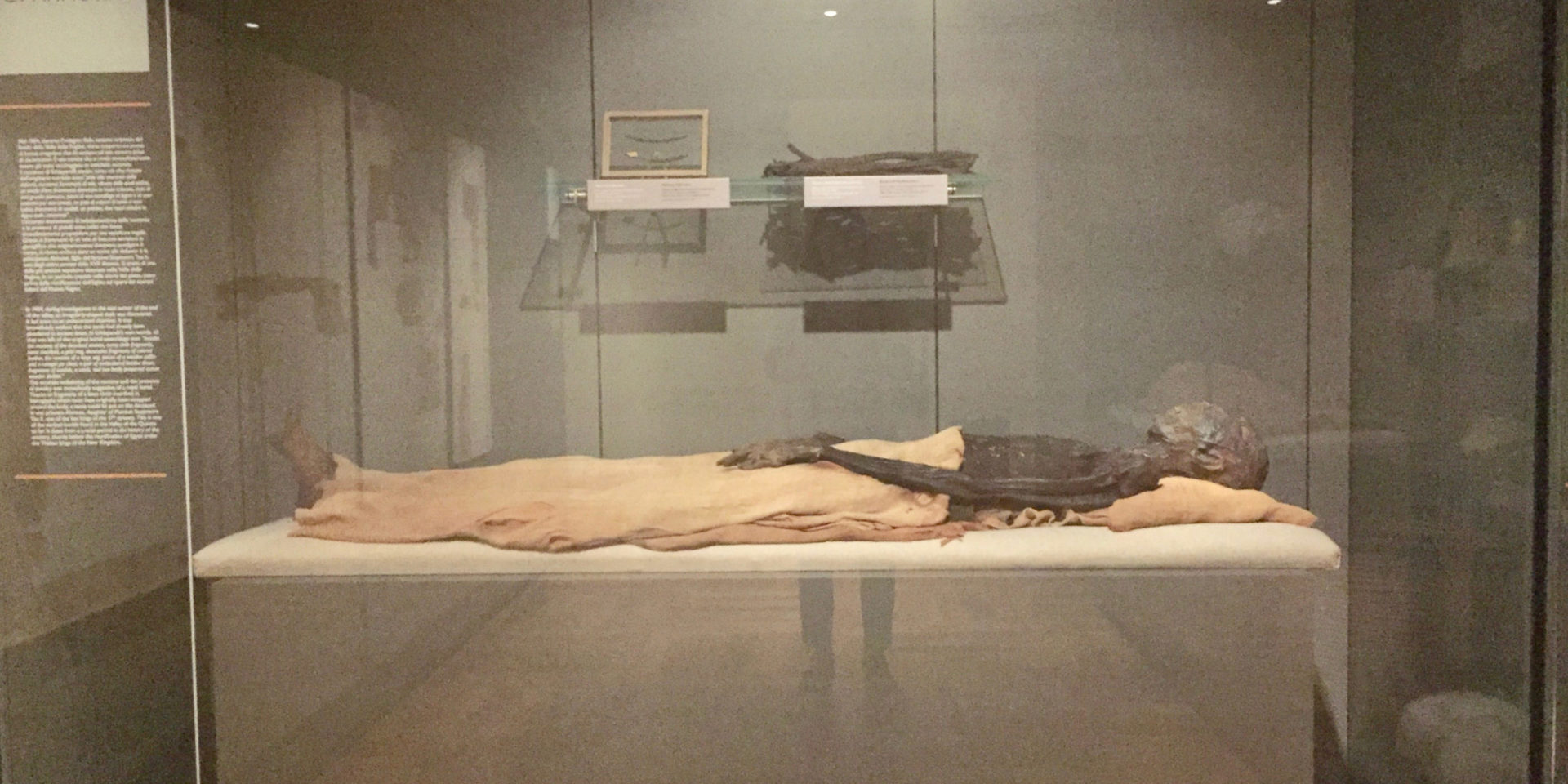The Power of Pigments
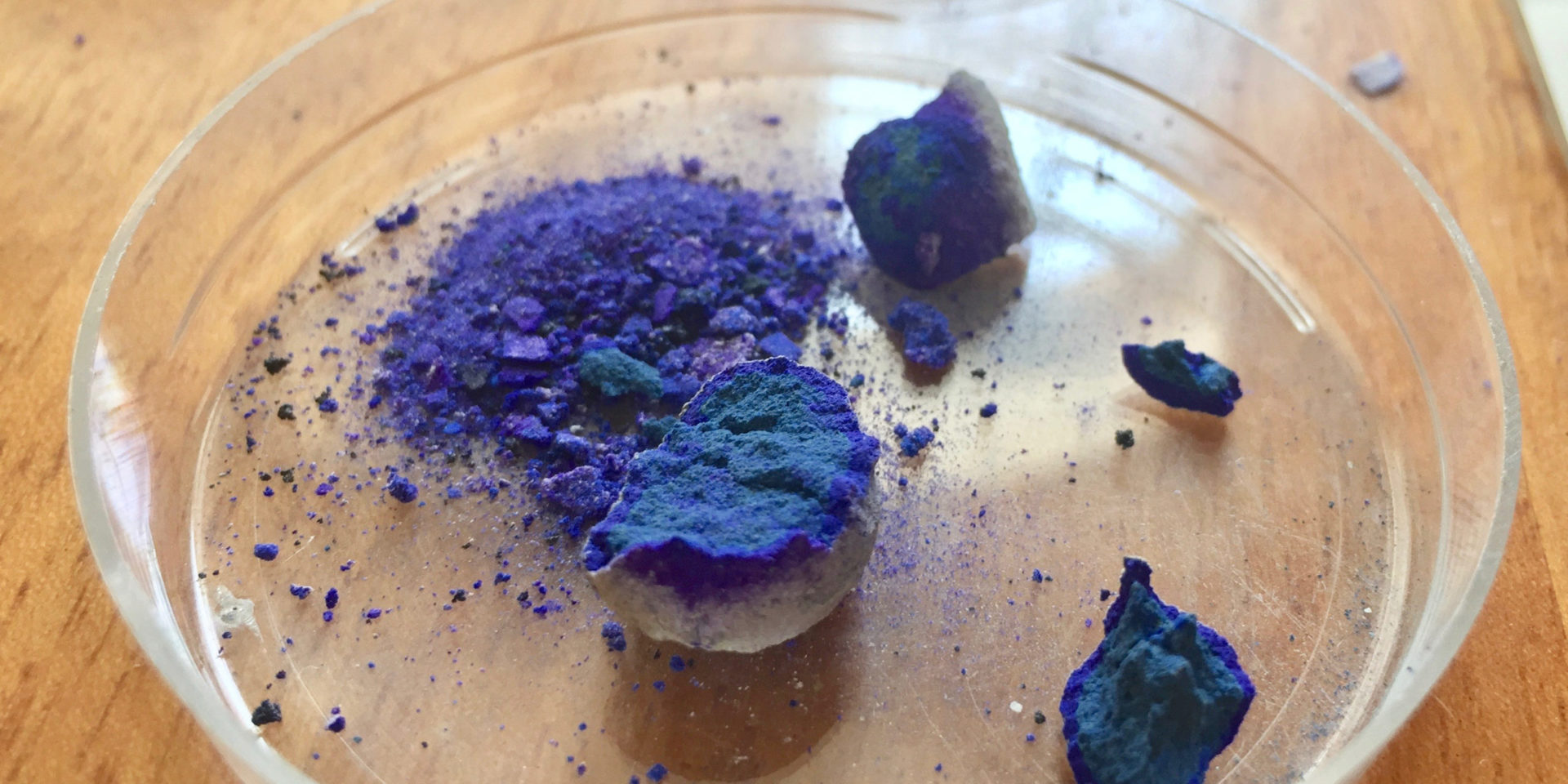
By Sophia Mittman ’22
Even though the ONE-MA^3 program has finished, I decided to stay in Italy to work with the University of Turin and the Museo Egizio (Egyptian Museum) studying the pigment Egyptian blue and Egyptian faience. We learned lots about Egyptian blue during ONE-MA^3, but I had no idea how extensive the topic of ancient pigments really is, especially in a scientific—not just historic or artistic—context. As I have been reading through scientific journal papers for this new research project, I not only have learned lots about Egyptian blue and faience, but also about pigments that retain similar and fascinating chemical properties, such as Han blue and Han purple.
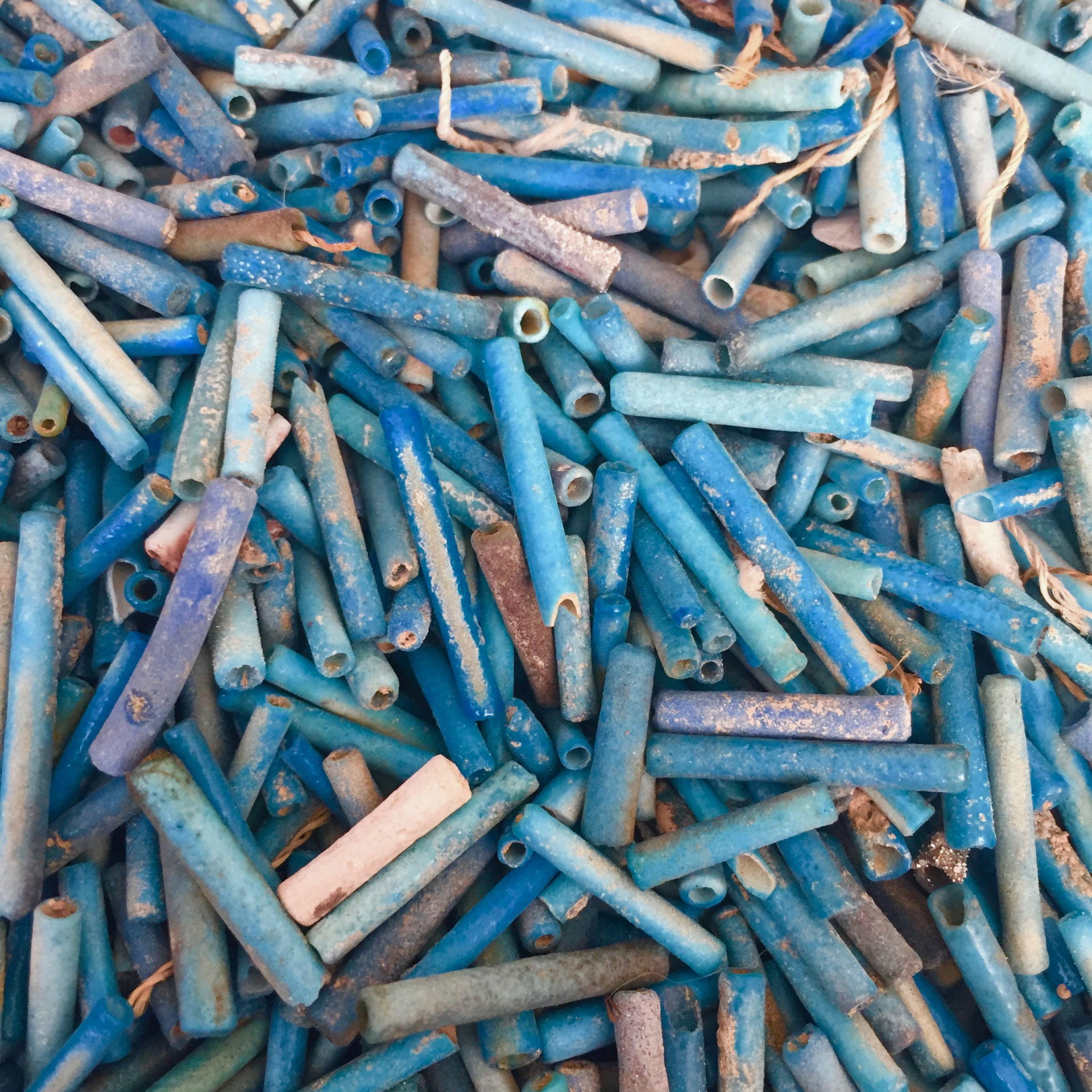
A close-up example of Egyptian mummy net beads created out of Egyptian blue and faience
Just to start, Egyptian blue alone is a mysterious yet seemingly-magical material that the Egyptians first synthesized thousands of years ago and is the first known synthetic pigment ever made. As a crystalline material, it is known as cuprorivaite, a calcium copper silicate. After reagents of copper, silica, calcium, and flux (also referred to as natron or sodium silicate, similar to baking soda) are ground together and fired, the blue pigment that forms is invincible to most types of acid and can retain its crystalline form for thousands of years, evidence that we are eye-witnesses of today. Sometimes the blue color will fade or become contaminated and show a darker color other than blue, but we are still able to identify the pigment as Egyptian blue because of its fluorescent properties in the infrared spectrum. Like we did in ONE-MA^3, if you take a full-spectrum camera, shine an infrared-free LED light onto the pigment, and take a photo through a lens that only allows infrared light to go through, then the Egyptian blue pigment will luminesce as a bright white or bright blue when everything else in the photograph is either black or grey (this analysis process is known as Visible Induced Luminescence, or VIL). Thus, the bright Egyptian blue pigment emits light, while materials that are black absorb visible light and materials that are grey reflect it. This is why Egyptian blue is undergoing many studies to determine its potential uses in forensics, biomedicine, and optical electronics.
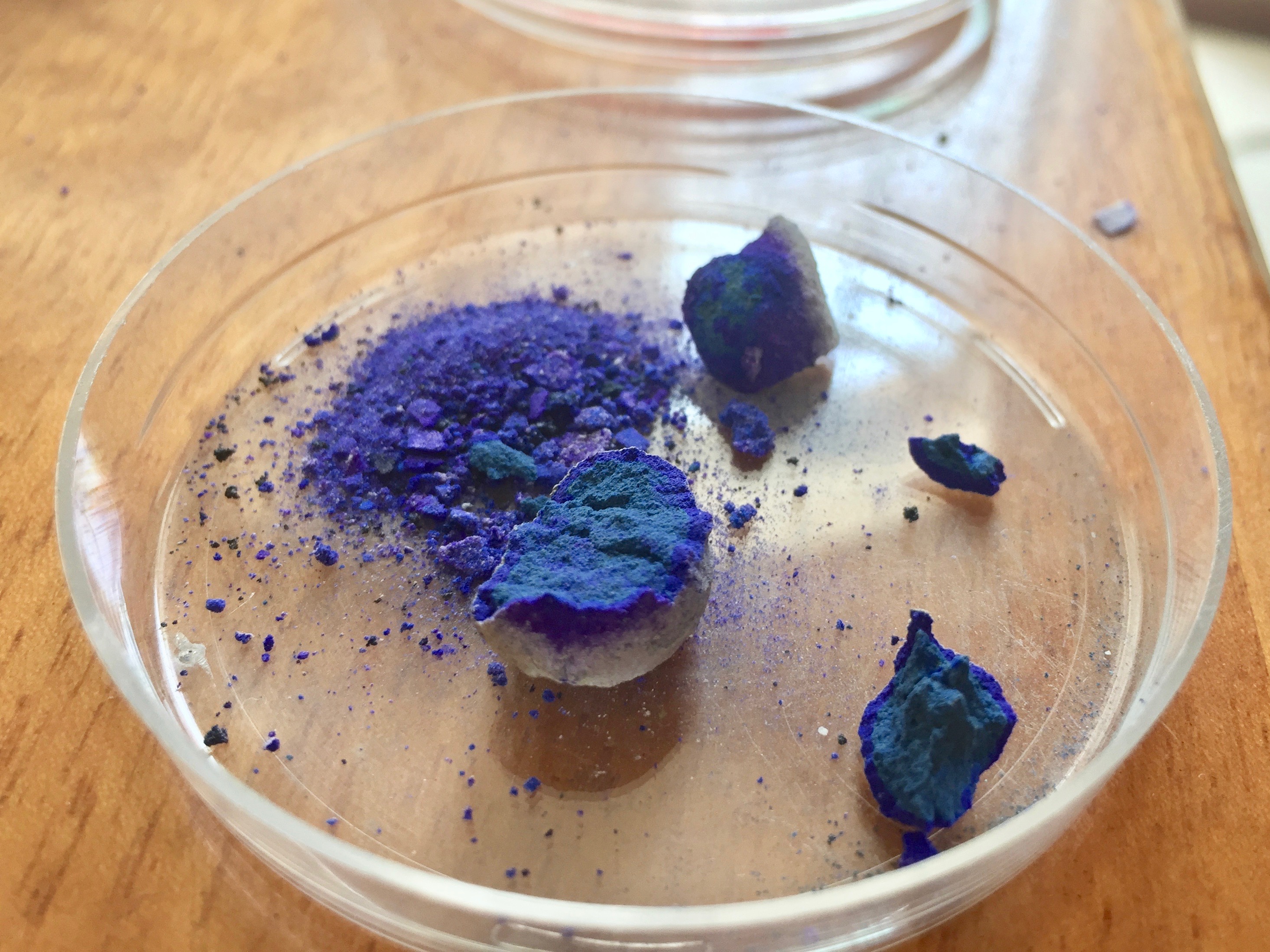
Han blue synthesized in labs at Aramengo during ONE-MA^3
Another material that is oftentimes confused with Egyptian blue is Egyptian faience. That simply may be because faience, visibly, is a brilliant blue color, ranging from deep ocean blue to light turquoise. But, that’s where the similarities stop. Faience was used by the Egyptians mainly to create ushabti figurines or scarab amulets, but it was not applied as a paint because faience itself is not a crushable pigment like Egyptian blue is. In reality (and to my surprise when I first learned about it), faience is a type of self-glazing material when fired. Inside of its chemical composition is a large amount of silica, making it a ceramic, but not one made of clay, which is usually the case when it comes to ceramics. There are three distinct ways to create faience: application, efflorescence, and cementation. The application method is slightly self-explanatory: figurines are sculpted and then the faience mixture is applied to the outside, and after firing, results in a shiny coat. Efflorescence is where the term “self-glazing” applies most, for it is when a wet mixture of faience is sculpted into the desired figurine and allowed to dry so that salts rise to the surface of the figuring. Once fired, the salt-infused surface becomes a thin, glassy and glossy blue material. Finally, the cementation method is when, like before, figurines are sculpted, but this time they are buried in frit so that when fired and removed from the pile of frit, the surface exposed to the frit leaves a layer of shiny faience. It is mystifying to try to think of how the Egyptians could have discovered such processes to create such beautiful materials, but it has led me to realize that even the ancient Egyptians were indeed incredible scientists of their own.
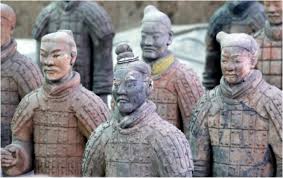
Han purple painted onto Terracotta Warrior sculptures (picture from crystallography365.wordpress.com)
Finally, another pigment that mimics the properties of Egyptian blue is Han blue and Han Purple. While Egyptian blue is a calciumcopper silicate, Han blue and purple are bariumcopper silicates. Interestingly enough, these two other pigments also have the correct structure to luminesce during VIL analyses, just like Egyptian blue, only slightly less fluorescent. During our lab activities during ONE-MA^3, some of us created Han blue, but we never got to interact with Han purple. Interestingly enough, even though these two materials are structurally and chemically similar to Egyptian blue, they were created in completely different parts of the world in ancient times. While Egyptian blue reigned in Egypt, Han blue and Han purple were supreme in China, where the purple pigment was used to paint the surfaces of some of the famous Terracotta Warrior sculptures and other forms of pottery. More recently, Han purple has been studied as a superconducting material with the ability to reduce three-dimensional structure to two-dimensional structure when placed in extremely cold temperatures and strong electromagnetic fields. Again, just by studying and reading about these archeological advances in materials made by humans thousands of years ago, it is mind-boggling yet indescribably exciting to use what we know about ancient human technologies and apply them to modern research applications today.
Share on Bluesky

